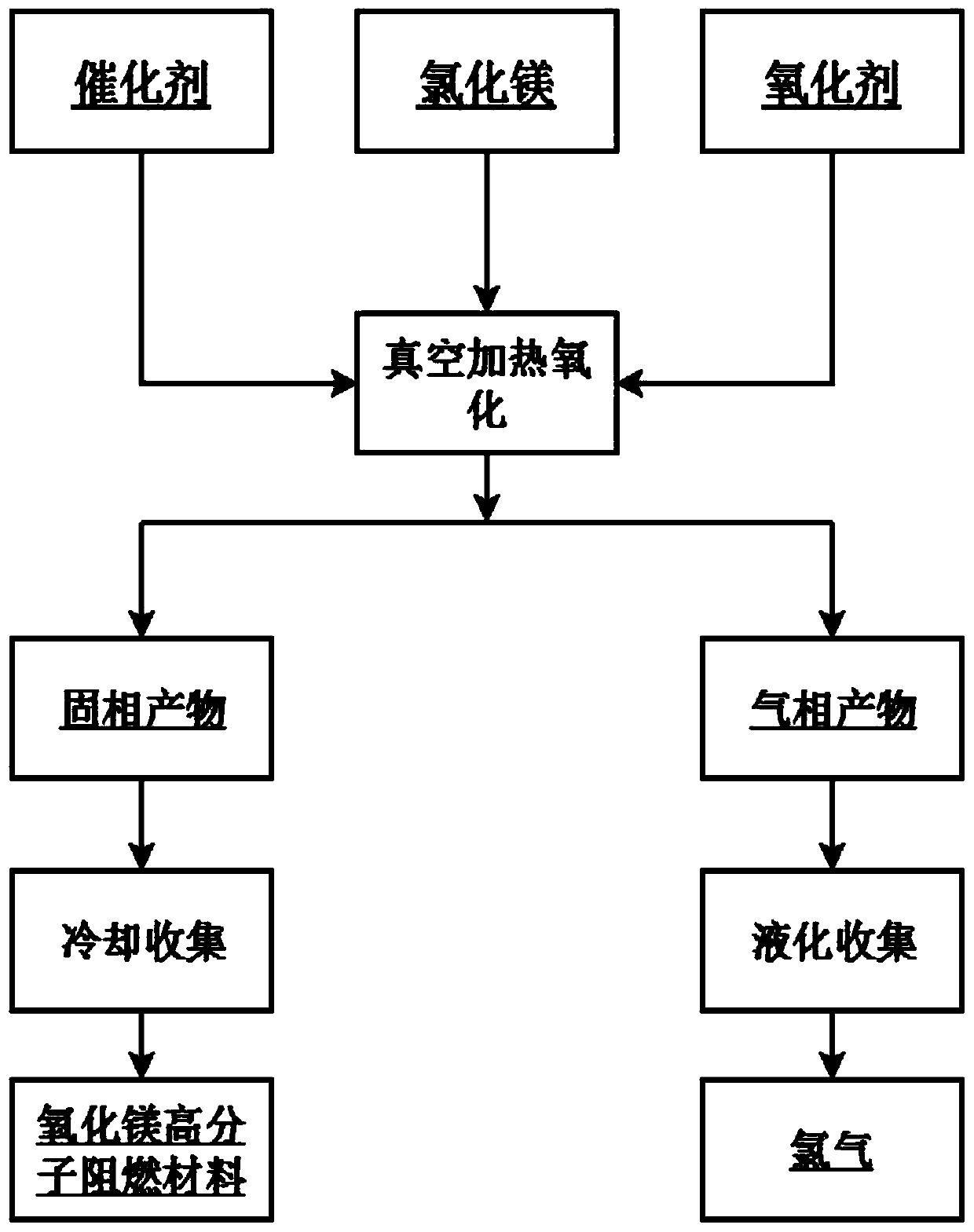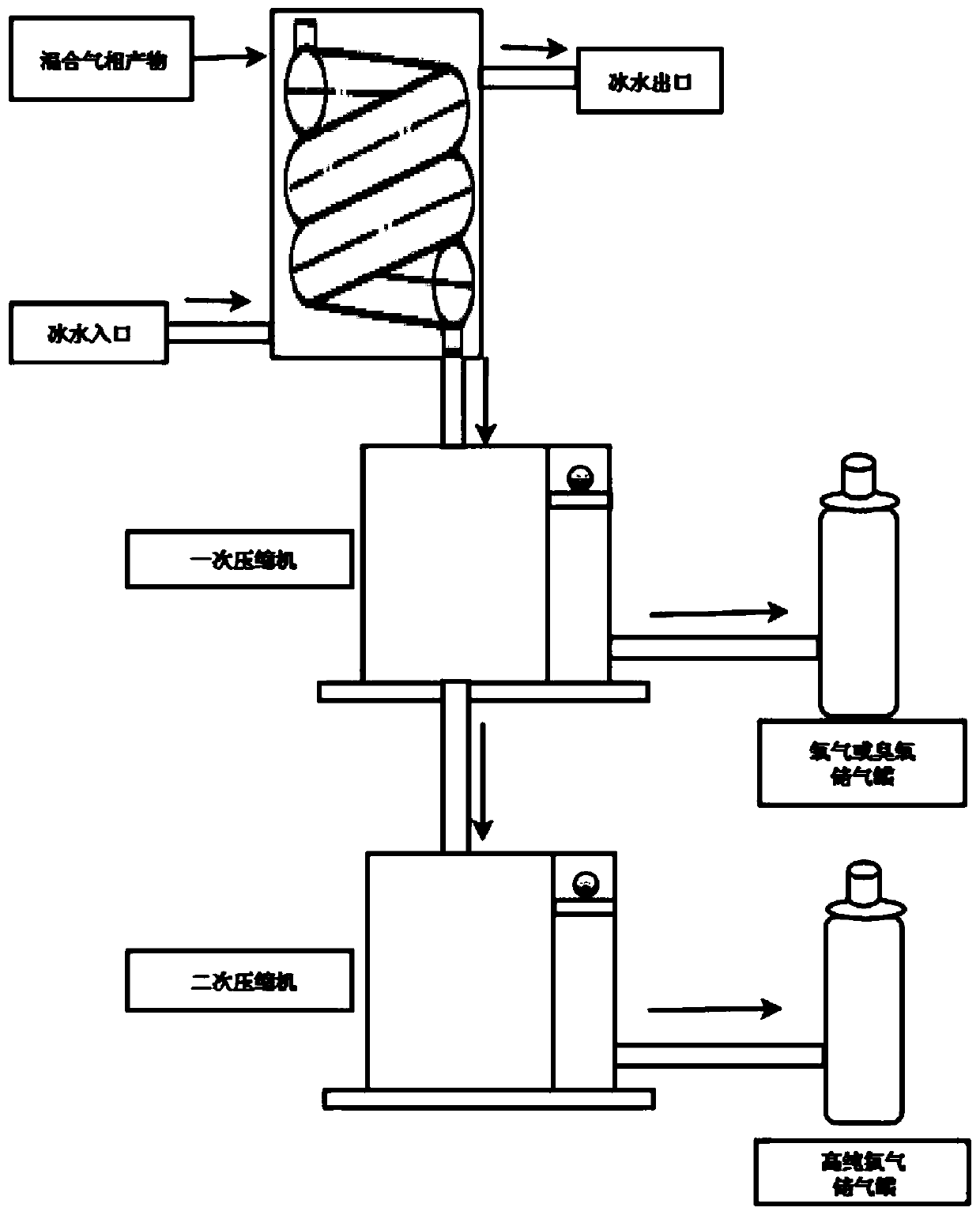Method for obtaining high-purity chlorine by efficiently utilizing magnesium chloride residues in low-temperature vacuum system
A low-temperature vacuum, high-purity chlorine technology, used in the preparation of chlorides, chlorine/hydrogen chloride purification, chemical instruments and methods, etc., can solve the problems of high reaction temperature requirements, insufficient purity, slow reaction rate, etc., and achieve fast reaction rate. , Improve the purity of the product and the effect of sufficient reaction
- Summary
- Abstract
- Description
- Claims
- Application Information
AI Technical Summary
Problems solved by technology
Method used
Image
Examples
Embodiment 1
[0036] Import 75kg of molten magnesium chloride waste residue into a vacuum oxidation furnace and add 0.5% catalyst for vacuum heating and oxidation. During the oxidation process, the vacuum degree is controlled to 40Pa; the oxidation temperature is 800°C; the reaction time is 20min. Pressure, the first stage pressure is 5.5MPa, the second stage pressure is 7MPa.
[0037] The oxidizing agent is ozone. The catalyst is composite active magnesium oxide.
[0038] The feed rate of the described oxidizing agent is to feed the oxidizing agent at a rate of 0.8kg / min.
Embodiment 2
[0040] Import 82.5kg of molten magnesium chloride waste residue into a vacuum oxidation furnace and add 0.5% catalyst for vacuum heating and oxidation. During the oxidation process, the vacuum degree is controlled to 75Pa; the oxidation temperature is 650°C; the reaction time is 40min. The liquefaction pressure, the first stage pressure is 6MPa, the second stage pressure is 8MPa.
[0041] The oxidizing agent is ozone. The catalyst is composite active magnesium oxide.
[0042] The feed rate of the described oxidizing agent is to feed the oxidizing agent at a rate of 0.5kg / min.
Embodiment 3
[0044] Import 90kg of molten magnesium chloride waste residue into a vacuum oxidation furnace and add 0.5% catalyst for vacuum heating and oxidation. During the oxidation process, the vacuum degree is controlled at 110Pa; the oxidation temperature is 400°C; the reaction time is 60min. In the purification device, the liquefaction temperature is controlled to be 11° C., and the liquefaction pressure is controlled. The pressure of the first stage is 6 MPa, and the pressure of the second stage is 9 MPa.
[0045] The oxidizing agent is ozone. The catalyst is composite active magnesium oxide.
[0046] The feed rate of the described oxidizing agent is to feed the oxidizing agent at a rate of 0.5kg / min.
PUM
 Login to View More
Login to View More Abstract
Description
Claims
Application Information
 Login to View More
Login to View More - R&D
- Intellectual Property
- Life Sciences
- Materials
- Tech Scout
- Unparalleled Data Quality
- Higher Quality Content
- 60% Fewer Hallucinations
Browse by: Latest US Patents, China's latest patents, Technical Efficacy Thesaurus, Application Domain, Technology Topic, Popular Technical Reports.
© 2025 PatSnap. All rights reserved.Legal|Privacy policy|Modern Slavery Act Transparency Statement|Sitemap|About US| Contact US: help@patsnap.com


